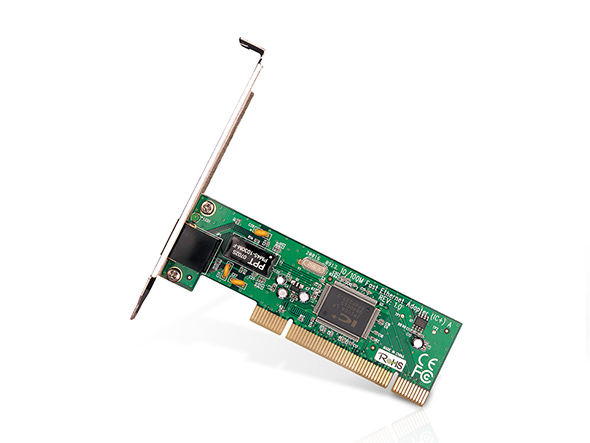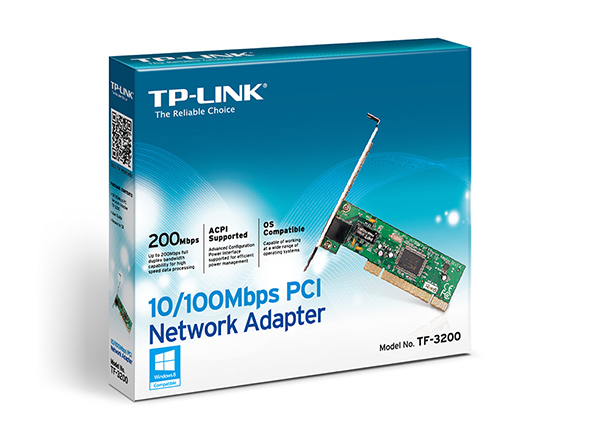TF-3200
End of Life10/100Mbps PCI Network Adapter
- 10/100Mbps PCI Adapter
- Supports IEEE 802.3x Full Duplex Flow Control
What This Product Does
The TF-3200 10/100M PCI Network Adapter is a highly integrated and cost-effective Fast Ethernet Adapter that provides 32-bit performance, PCI bus controller, and full compliance with IEEE 802.3 10Base-T, IEEE 802.3u 100Base-TX specifications and IEEE 802.3x Full Duplex Flow Control.
The TF-3200 keeps low cost and eliminates usage barriers. It is easy to upgrade a network from 10Mbps to 100Mbps. It supports both 10Mbps and 100Mbps network speed both in Half-Duplex and Full-Duplex transfer modes, using Auto-Negotiation technology to detect the network speed. It also can be widely used in most modern Operating Systems.
| HARDWARE FEATURES | |
|---|---|
| Standards and Protocols | IEEE 802.3, 802.3u, 802.3x CSMA/CD, TCP/IP, PCI Revision 2.1/2.2 |
| Interface | 32-bit PCI 1 10/100Mbps RJ45 port |
| Network Media | 10BASE-T:UTP category 3, 4, 5 cable (maximum 100m) EIA/TIA-568 100Ω STP (maximum 100m) 100BASE-TX: UTP category 5, 5e cable (maximum 100m) EIA/TIA-568 100Ω STP (maximum 100m) |
| Data Rates | 10/100Mbps for Half-Duplex mode 20/200Mbps for Full-Duplex mode |
| LED Indicator | Link/Act |
| Flow Control | IEEE 802.3x Flow Control (Full-Duplex) |
| OTHERS | |
|---|---|
| Certification | CE, FCC, RoHS |
| Package Contents | Network Adapter Resource CD Quick Installation Guide |
| System Requirements | Win 98SE/Me/NT/2000/XP/Vista/7,Linux/Novell Netware |
| Environment | Operating Temperature: 0℃~40℃ (32℉~104℉) Storage Temperature: -40℃~70℃ (-40℉~158℉) Operating Humidity: 10%~90% non-condensing Storage Humidity: 5%~90% non-condensing |
† Maximum wireless signal rates are the physical rates derived from IEEE Standard 802.11 specifications. Range, coverage, and the maximum number of connected devices are based on test results under normal usage conditions. Actual wireless data throughput, wireless coverage, and number of connected devices are not guaranteed and will vary as a result of 1) environmental factors, including building materials, physical objects, and obstacles, 2) network conditions, including local interference, volume and density of traffic, product location, network complexity, and network overhead, and 3) client limitations, including rated performance, location, connection quality, and client condition.



